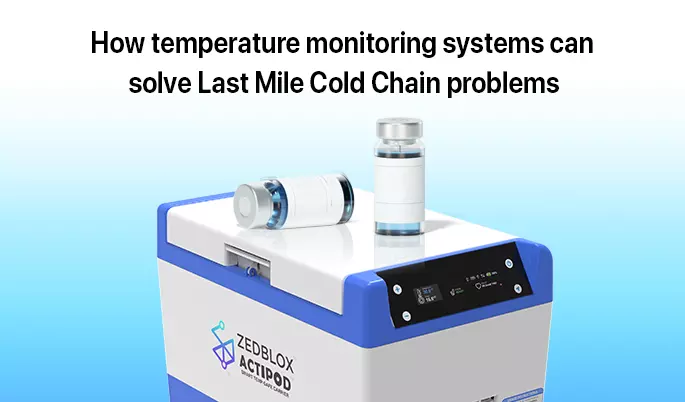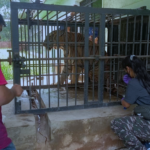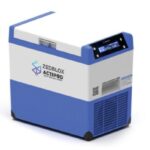The last-mile cold chain has always been a major logistical challenge for the healthcare sector. Especially when life-saving drugs and vaccines need to be delivered to remote locations. Over the years, passive carriers like ice boxes have been the go-to solution due to their portability and lightweight manner. With technological advancement, portable refrigerators have come up as a more modern and reliable choice. But even that has its set of challenges.
Providing uninterrupted power is one issue. The other one is the lack of data to map temperature fluctuations and ensure the viability of the parcel that reaches the healthcare professional. In situations where even a rise of 1 degree can reduce the effectiveness of the medication, this is a serious problem.
Most vaccines lose viability the more they are outside their ideal temperature range, regardless of whether excessively warm or excessively cold. They ought to be put away between – 58 F and 5 F whenever frozen, or 35 F to 46 F in other cases. Loss incurred from the vaccines being kept in temperatures outside the suggested range is assessed at $34.1 billion every year. This includes lost item cost, substitution cost, and squandered coordination expense.A fourth of vials are corrupted when they show up at their intended location, because of inaccurate transportation techniques, as indicated by the International Air Transport Association’s Center of Excellence for Independent Validators in Pharmaceutical Logistics. Also, 20% of all biopharmaceutical items that have a temperature factor attached to them, including plasma, are harmed during cold chain transport.
However, those challenges can now be a thing of the past. With the advent of cloud technology and GPS, we can now have the data captured remotely and have them logged for future reference. Blockchain, distributed storage, and sensors that always monitor and track the package give a constant peek at temperature changes — and a chance to take action before harm is caused. Without sensors, there’s no comprehension of what befalls the temperature once the materials leave the manufacturing plants or the labs where they are developed.Here’s how this new development is set to revolutionize the last-mile cold chain and be the answer to a serious logistical challenge.
Accuracy and ease of access:
The information assembled by a temperature checking framework to a cloud infrastructure can be checked from anywhere through a web application or an application on a handheld device. All the temperature information is available every minute of every day.
Manual reports are imperfect more often than not, but a temperature observing framework ensures that it gives precise temperature reports which help individuals predict mishaps and prevent them from happening. With exact temperature information, you’ll know when things are taking a turn towards something bad by the number of units the temperature expanded or diminished.
When your delivery dept is furnished with temperature checking frameworks, it helps enhance the final supply chain. As delivery vehicles are regularly quick-moving, a temperature observing framework always keeps you informed about their present status. The simplicity of getting to information from any place in the cloud implies that you can watch out for your delivery team to stay away from setbacks. It gives you a better picture and permits you to track problems and take action as they happen.
Nonstop recording:
When it comes to logistics, consistent information recording is of utmost importance. At the point when your items are in a truck while heading towards the delivery location, you may only have data to look at. There’s no chance to be aware of their situation or whereabouts. Every one of the information coming from the monitoring framework can help you make decisions that can play a vital role in your business.
Constant information gathering helps you check whether anything has been compromised. Besides, constant information recording will permit you to catch peaks and troughs, check for anomalies, spot patterns, and that’s just the beginning.
In logistical scenarios, a temperature observing framework allows you to get involved by recording information every minute of every day so you can take advantage of it. It empowers you by arming you with the right data to settle on informed choices at each point in the final cold chain.
Data analysis and insight generation:
A temperature checking framework is never complete without an examination of the information it gathers. In the supply chain, an examination can assist with recognizing the problems and issues that are preventing proper temperature control.
The examination helps your logistics team to handle future issues by dissecting the information. For example, in case you notice that a huge portion of your merchandise’s quality is being compromised, you can not track down the justification behind the rise and fall in temperature without the particulars from temperature information and examination.
In case you have the perfect measure of information, the temperature observing framework will actually hand you out point-by-point temperature reports. These reports will assist you with analysis and help find insights about what’s turning out badly and how to manage it. Besides, some top-of-the-line temperature checking frameworks come embedded with solutions to process the data and develop reports.
Data is usually useless unless you try and figure out a way to develop actionable insights from them. A temperature observing framework will help you with an inside and out investigation of temperature information. With it, you can wipe out your delivery team’s regular as well as new problems that are caused due to fluctuations in temperature.
When it comes to the last-mile cold chain, a lot depends on maintaining the ideal temperature. It can be the difference between life and death in some dire cases. And that is why, a robust framework to keep track of the most vital information, is always recommended.






